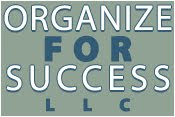While each day offers us only 1,440 minutes, beyond sheer strategy and proactivity, there are plenty of ways to make the most of what limited time we have. According to Dictionary.com, automation is "the technique, method or system of operating or controlling a process by... electronic devices, reducing human intervention to a minimum", which conveys the value of automation in that less of your direct human intervention opens up your time for addressing other functionality that cannot be done otherwise. Here are a few ways automation allows you to do more with your limited resource of time:
- Use cloud-based back-up for saving your files that matter. Computers crash. Fires can destroy all your devices. Emergencies happen, but you can be prepared with automated remote storage, saving you the time it takes to plug in a back-up device and safeguarding you from accidentally forgetting to do the back-up yourself. Simply "set it and forget it" with one of these options: Carbonite, Crash Plan or Mozy.
- Use a social media manager to share the right info at the right time. Whether you depend on Google+, LinkedIn, Facebook or Twitter, you must post the best message for your audience at the best time for that audience to receive it. While timing and messaging varies by platform, you still have other things to be doing; you can't stay planted by your computer all the time. Although there is controversy about their SEO impact, there are tools to help with the aforementioned issue as well as monitoring your business' social media results. Schedule messages to be posted on each social media outlet when you want via one of these options: Buffer, Hootsuite, Postling, SocialOomph or Sprout Social.
- Use a password manager for safekeeping your many different logins. As more of our work and play is conducted online, it becomes increasingly important to use a diverse set of strong passwords; however, as the list of passwords grows, the harder it is to remember them all. Further, the dangers associated with a printed list are frightening, whether it is losing that list, damaging that list or having that list fall into the wrong person's hands. Allow your brain to focus on thinking, rather than remembering, and rest assured that your passwords are safely secured in the cloud, instead of just a piece of paper. Employ one of these options for your password management: 1Password, Dashlane, LastPass, Roboform or SplashID.
- Use tools to manage your email, rather than letting email manage you. The average busy professional receives over 150 email messages each day. While "processing" emails is much more efficient than repeatedly "checking" emails, it still takes a good chunk of time to go through that many messages daily, let alone should you get behind at all. While there are plenty of technological tools designed to help, there are a few that rise above the competition. If you use Gmail, Boomerang allows you to send an email later, take messages out of your inbox until you actually need them, be nudged into following up at a specified time when there's no reply to a message you've sent and utilize email to remind yourself of what you think about needing to do while on-the-go. Alternatively, Mailbox lets you quickly swipe messages to your archive or trash, scan entire conversations in a chat-like view to more rapidly work through what messages have been received and bring messages back to your inbox when more appropriate for you to focus on what's important now. Finally, Mailstrom identifies which of your emails are related, groups them together for you to more easily process them quickly and empowers you to more succinctly unsubscribe from mailing lists you no longer desire.
- Put the Internet to work for you. It is very valuable to use all available options for helping business processes occur without your involvement, and there are several shining stars operating in this space. If This Then That integrates 152 different channels (or applications), each of which has its own options, allowing you to create "recipes" for a trigger action to lead to a resulting action. For example, you could use the trigger of "when I receive an email that has an attachment to my Gmail account" for the resulting action of "that attachment is added to my Evernote database" as a recipe. Plus, If This Then That is currently totally free... Happiness! Browse all the recipes currently being utilized by clicking here. Likewise, Podbox and Zapier expand the options for various channels or applications that can be integrated, but they can have fees.
How do you currently utilize automation? What benefits do you perceive could come from greater automation? Are there tools mentioned here that you will start to use?
Subscribe to:
Post Comments (Atom)


No comments:
Post a Comment